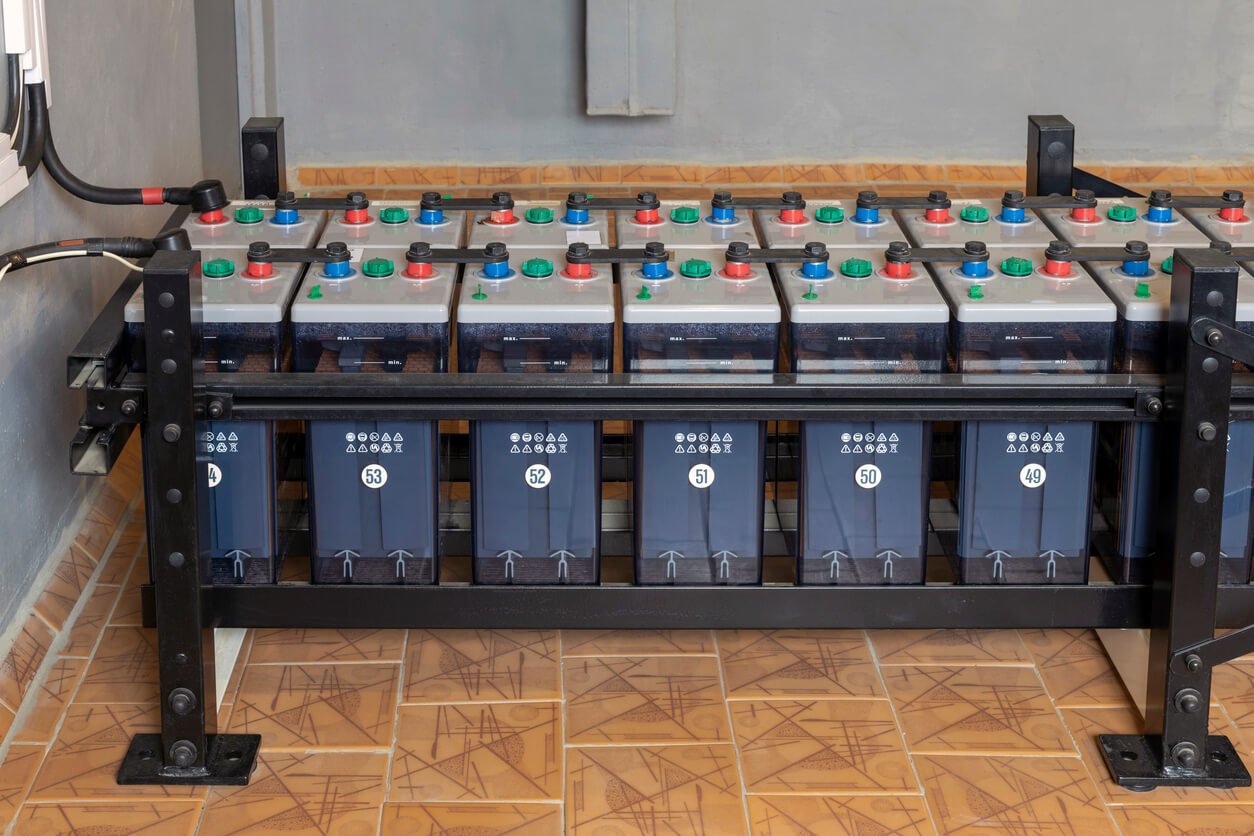4 Types of Fire Pumps
- Horizontal split case pump
- Vertical split case pump
- Vertical in-line pump
- Vertical turbine pump
When a fire emergency strikes your commercial facility, the difference between minor damage and catastrophic loss often comes down to one critical question: Does your fire protection system have adequate water pressure and flow to suppress the blaze effectively?
For building and facility managers, understanding the types of fire pumps available and their specific applications represents a fundamental responsibility in safeguarding lives and property.
The wrong pump selection can result in insufficient water delivery during the moments when every second counts most.
Fire pumps serve as the backbone of commercial fire safety systems, ensuring that sprinklers, standpipes, and other water-based protection measures receive the pressure and volume needed to combat fires across all areas of your facility.
With four distinct types of fire pumps commonly used in commercial applications, each designed for specific operational requirements and environmental conditions, making the right choice requires understanding both your building's unique needs and each pump's capabilities.
Key Takeaways
- Horizontal split case pumps offer the most cost-effective solution for standard commercial applications with adequate floor space, providing easy maintenance access and handling high-flow requirements from 750+ GPM.
- Vertical split case pumps solve space constraints while maintaining serviceability, making them ideal for flood-prone mechanical rooms and facilities where floor space is limited but maintenance access remains important.
- Vertical in-line pumps maximize space efficiency in extremely constrained environments but require electric-only operation and complete disassembly for maintenance, limiting them to smaller commercial applications under 1,000 GPM.
- Vertical turbine pumps are the only option for underground water sources and negative suction applications, offering dual power options (electric/diesel) for critical facilities requiring maximum reliability.
- Professional consultation is essential for proper fire pump selection, as system demand calculations, building characteristics, and code compliance requirements determine the optimal pump type for your specific facility needs.
What Is A Fire Pump?
A fire pump functions as a critical component within comprehensive fire safety systems, designed to boost water pressure when the municipal water supply proves insufficient for effective fire suppression.
When system pressure falls below preset levels, the fire pump activates automatically via pressure-sensitive switches, ensuring consistent water delivery throughout protected areas without manual intervention.
These engineered systems draw water from storage tanks, municipal connections, or static sources, then pressurize and distribute it through building fire protection networks (fire sprinkler systems, standpipes, and other water-based fire protection systems) at the precise flow rates and pressures required by NFPA 20 standards.
System demand calculations consider multiple factors, including:
- Building height
- Occupancy type
- Hazard classification
- Total area requiring protection.
While most fire pumps utilize centrifugal pumps, some specialized applications may require positive displacement pumps for consistent flow delivery regardless of pressure variations.
The pump system includes essential components: the pump unit, driver motor, controller, pressure maintenance pump, jockey pump, and monitoring devices.
Electric fire pumps dominate commercial installations due to their reliability and lower maintenance requirements compared to diesel-driven units.
Modern fire pumps integrate with building automation systems, providing real-time status updates and performance data to facility management teams.
4 Types of Fire Pumps
There are several types of fire pumps, each with its unique strengths and applications. Here is a brief overview of the most common fire pumps and their use cases.
1. Horizontal Split Case Fire Pumps
Horizontal split case (HSC) pumps represent the most widely used fire pump type in commercial applications. These pumps feature a casing that splits horizontally, allowing access to internal components without disconnecting suction and discharge piping. This design characteristic makes maintenance procedures more efficient and cost-effective for facility management teams.
Horizontal split units employ an end suction pump configuration, where water enters through one end of the pump casing and exits radially through the discharge outlet. This offers several operational advantages.
Maintenance technicians can inspect and service impellers, wear rings, and seals without major disassembly. This accessibility reduces downtime during scheduled maintenance and emergency repairs. The pump's horizontal orientation also provides stable operation and even weight distribution across mounting surfaces.
These pumps excel in high-flow applications, typically handling capacities from 750 gallons per minute to several thousand GPM. The robust construction withstands continuous operation demands while maintaining consistent performance over extended service periods. Most horizontal split case pumps utilize electric motors, though diesel engine options are available for critical applications requiring backup power independence.
Installation flexibility makes horizontal split case pumps suitable for various facility types. They accommodate different suction arrangements, including suction tanks, municipal connections, and gravity-fed systems. The pumps work effectively with both wet and dry suction conditions, adapting to diverse water supply configurations.
Facility managers should consider horizontal split case pumps for projects with adequate floor space, standard flow requirements, and cost-conscious budgets. These pumps provide proven reliability in office buildings, retail centers, warehouses, and manufacturing facilities where maintenance accessibility and operational economy are priorities.
2. Vertical Split Case Fire Pumps
Vertical split case fire pumps address space constraints common in modern commercial facilities. The vertical orientation reduces the pump's footprint while maintaining the split-case design benefits of accessible internal components. This configuration proves particularly valuable in mechanical rooms with limited floor space or height restrictions.
The motor mounts above the pump casing in vertical split case designs, protecting electrical components from potential flood damage. This elevated configuration offers added safety in basements or areas prone to water accumulation.
Maintenance remains straightforward despite the vertical configuration. Technicians can access internal components by removing the upper casing section while leaving suction and discharge connections intact. This design maintains the serviceability advantages that make split-case pumps popular with maintenance professionals.
Vertical split case pumps handle moderate to high flow applications effectively. They provide reliable performance in pressure ranges suitable for mid-rise buildings and complex sprinkler systems. The compact design accommodates installations where horizontal pumps would not fit, expanding options for retrofits and space-constrained new construction projects.
Power consumption characteristics often favor vertical split case pumps in certain applications. The vertical design can provide efficient operation while requiring less floor space than comparable horizontal units. This efficiency translates to lower operating costs over the pump's service life.
Facility managers should evaluate vertical split case pumps for projects with space limitations, flood-prone mechanical rooms, or installations requiring compact equipment arrangements. These pumps serve effectively in hospitals, hotels, high-rise buildings, and office towers where mechanical space comes at a premium.
3. Vertical In-Line Fire Pumps
Vertical in-line fire pumps provide space-efficient fire protection solutions where mechanical room real estate is extremely limited.
These pumps feature suction and discharge connections aligned along the same axis, allowing direct installation within piping runs without additional elbows or fittings. This streamlined design minimizes installation complexity while maximizing available floor space.
Unlike split-case pumps, where the casing separates horizontally or vertically for maintenance, in-line pumps require full removal from the piping system for internal service.
The in-line configuration offers unique hydraulic advantages. Water flows smoothly through the pump without direction changes, reducing friction losses and improving overall system efficiency. This straight-through design eliminates turbulence that can occur in other pump configurations, resulting in quieter operation and reduced wear on internal components.
Key advantages of vertical in-line fire pumps include:
- Minimal floor space requirements due to compact vertical design
- Simplified piping arrangements with direct connection capabilities
- Reduced installation time and labor costs
- Lower maintenance space requirements around the unit
- Quiet operation suitable for noise-sensitive environments
Electric motors exclusively power vertical in-line pumps, limiting their application in facilities requiring diesel backup capabilities. This restriction makes them unsuitable for critical installations where power reliability concerns exist. Additionally, maintenance procedures require complete system disassembly, increasing service time and complexity compared to split-case designs.
These pumps typically handle flows under 1,000 gallons per minute, making them appropriate for small commercial buildings, data centers, telecommunications facilities, and other applications where space constraints outweigh the limitations of electric-only operation and restricted maintenance access.
4. Vertical Turbine Fire Pumps
Vertical turbine fire pumps are ideal in applications requiring water supply from underground sources, storage tanks, or wells. These multistage, multiport pumps utilize several impeller stages arranged vertically to generate high pressures while drawing water from static sources below ground level. The turbine design accommodates fluctuating water levels effectively, maintaining consistent performance as source levels fluctuate.
The unique capability to operate with negative suction pressure distinguishes vertical turbine pumps from other types. Vertical turbine pumps accommodate both electric motor and diesel engine drivers, providing flexibility for critical fire protection applications. Diesel configurations offer complete independence from electrical systems, ensuring operation during power outages or electrical emergencies. This dual-power capability makes turbine pumps essential for facilities requiring maximum fire protection reliability.
Vertical turbine fire pumps work well in:
- Industrial facilities with underground water storage systems
- Large commercial complexes requiring high-pressure water delivery
- Chemical processing plants with specialized suppression requirements
- Mining operations with remote water sources
- Facilities where positive displacement characteristics are needed
- Installation sites with limited horizontal space but adequate depth
Construction durability allows vertical turbine pumps to handle demanding industrial environments. The robust design withstands continuous operation cycles while maintaining performance standards. Multiple impeller stages provide pressure boosting capabilities that exceed single-stage pump limitations.
Installation complexity requires specialized expertise and equipment. The pump extends deep into water sources, necessitating careful alignment and support structure design. Professional installation ensures proper pump positioning and optimal performance characteristics.
Ready to Install a Fire Pump for Your Facility?
Choosing the ideal fire pump for your facility is a complex process as it depends on many factors, such as capacity, cost, system layout, and environmental considerations. While having a knowledge base can differentiate a passive building owner from a savvy one, tackling this critical fire and life safety challenge alone is never advisable.
Seek out experienced fire service protection professionals who can advise you on choosing the right equipment for your needs. They will assess your building, determine the most cost-effective installation, and ensure your fire pump is properly maintained and inspected in accordance with NFPA 20.








